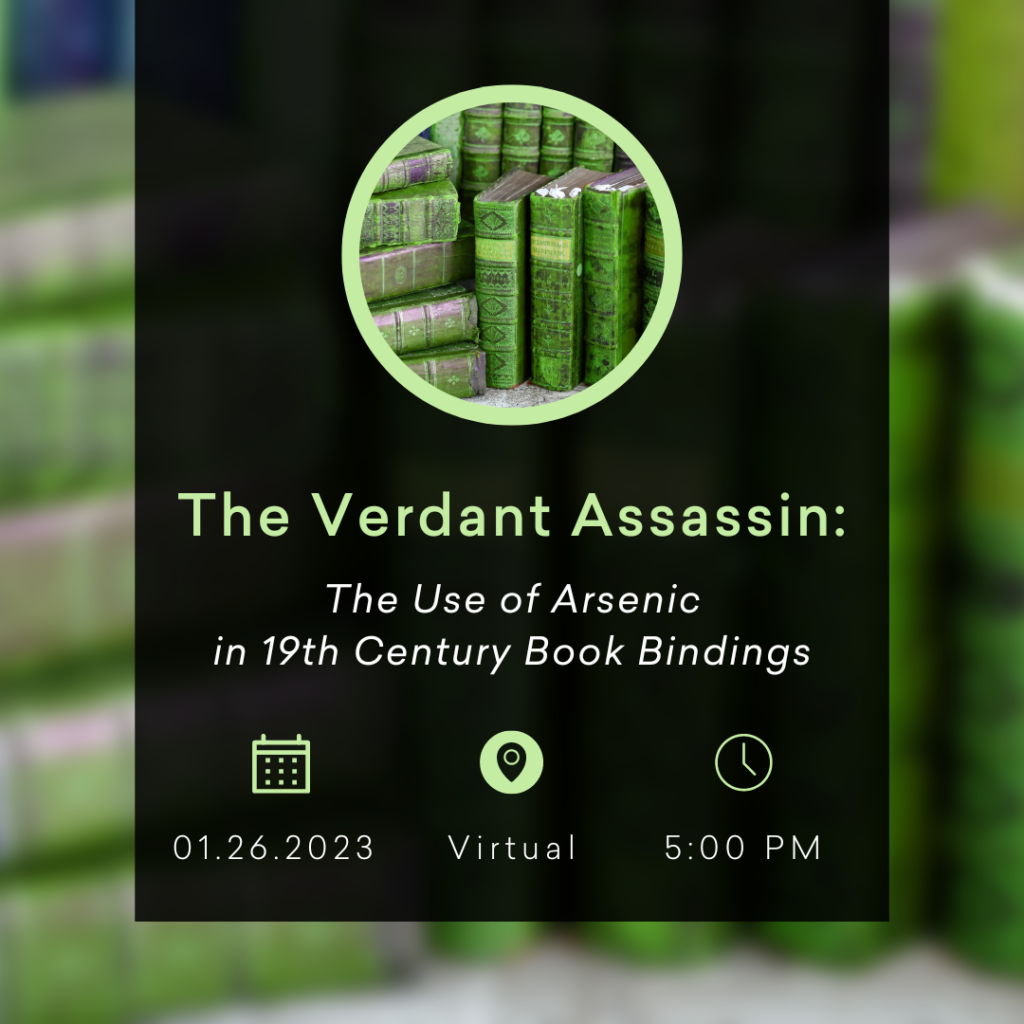In 1869, an anonymous author penned a novel titled The Green of the Period. The plot is simple; three friends discuss newspaper reports and their own close encounters with a villain the author calls “the verdant assassin.” Who is this mysterious figure, and – a more intriguing question – why is it green?
The villain, we learn, is not a person, but a poison. Back in 1771, Swedish chemist Carl Wilhelm Scheele had developed a green pigment made from a compound of copper arsenite. The use of arsenic as a poison was well-known, and the pure substance was readily available for use as a manner of pest control. As the 19th century wore on, the rich, emerald green hue became a popular additive in textiles, kitchen wares, artificial and dried flowers, and in book bindings. Its use was twofold: while it did provide practical benefits (imagine pest-controlled curtains!), it also provided a splash of color to a world burning with gas lights and industrial pollution.
However, doctors quickly noticed a rise in the symptoms associated with arsenic poisoning: headaches, dry throat, skin irritation, and, in extreme cases, partial paralysis and even death.
So what does this mean for archivists, museum educators, and librarians who work with special collections of books made with arsenic bindings? Join us for a virtual program as we explore NCHGS’s own library holdings with Registrar Monica Bugbee, and hear from expert conservator Melissa Tedone, Lab Head for Library Materials Conservation at Winterthur Museum, Garden, and Library, and head conservator of the Poison Book Project.
This program is free for NCHGS members and $5 for non-members. Registration is required.
